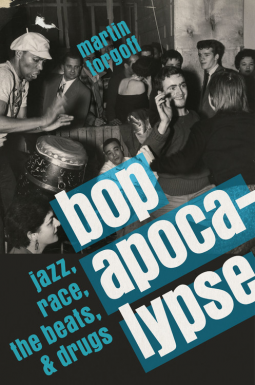
Bop Apocalypse
jazz, race, the beats, & drugs
by Martin Torgoff
This title was previously available on NetGalley and is now archived.
Send NetGalley books directly to your Kindle or Kindle app
1
To read on a Kindle or Kindle app, please add kindle@netgalley.com as an approved email address to receive files in your Amazon account. Click here for step-by-step instructions.
2
Also find your Kindle email address within your Amazon account, and enter it here.
Pub Date Jan 10 2017 | Archive Date Jan 10 2017
Perseus Books Group, Da Capo Press | Da Capo Press
Description
Channeling his decades of writing experience, Torgoff connects the birth of jazz in New Orleans, the first drug laws, Louis Armstrong, the Federal Bureau of Narcotics, swing, Lester Young, Billie Holliday, the Savoy Ballroom, Reefer Madness, Charlie Parker, the birth of bebop, the rise of the Beat Generation, and the launch of heroin in Harlem.
Having spent a lifetime immersed in the overlapping worlds of music and drugs, Torgoff reveals material that has never been disclosed before.Bop Apocalypse is a truly fresh contribution to the understanding of jazz, race, and drug culture.
Available Editions
| EDITION | Hardcover |
| ISBN | 9780306824753 |
| PRICE | $25.99 (USD) |
| PAGES | 320 |
Average rating from 2 members
Featured Reviews
 Susan R, Reviewer
Susan R, Reviewer
This book begins with the author’s own experience of drug use before looking at the influence of drugs on the evolution of jazz and the relationship between narcotics and the writers, and poets, of the Beat Generation. The book opens in the 1930’s, with the country plunged into Depression, and the birth of jazz in New Orleans. While we hear of how future screenwriter, Terry Southern, and the founder of Jazz label, Stash Records, Bernie Brightman, discovered marijuana; archconservative, Harry J. Anslinger, the Chief of the Federal Bureau of Narcotics, preached the evils of the same substance and promised a moral crusade against drugs.
It is clear that, in those early days, drugs were sold fairly openly. Bernie Brightman recalled smoking joints in Harlem dance halls, while there were even famous sellers, such as Mezz Mezzrow. Along with the history of drug use, there is also – of course – the history of the music. Louis Armstrong, Billie Holiday, Charlie Parker, Miles Davis and others. This book not only brings the place, and the era, alive, but gives us biographies of the characters and the music. We then move on to the Beat Generation, with Herbert Huncke (hustler, writer and drug addict and like most of the people that populate these pages, he just has an amazing name as a matter of course), Jack Kerouac, William Burroughs and Allen Ginsberg.
This book will appeal to music buffs, as well as those interested in history. It takes us through the professional success of many of those involved, as well as the personal cost – and cost there is. What begins optimistically and experimentally, often leads to abuse, addiction and all of the issues that go along with that. While marijuana often led to stronger drugs, such as heroin, the needle marks of addiction was often initially viewed as a declaration of being hip – of rebellion. However, they led to the pain of withdrawal, often combined with the problems of fame and alcoholism. Drug use over the years, which was initially viewed as something fashionable and, even romantic, later become viewed as a plague in the community.
I found this a really fascinating read. The author does a great job of explaining why drug use was so important to this group of musicians and writers. He does not romanticise drug use, but shows the influence it had and why it was so important. I liked the style of the writing too, which combines biography, interviews, history and a good appraisal of the Beat Generation of writers and of music – Jazz, swing and bebop. I received a copy of this book from the publisher, via NetGalley, for review.



